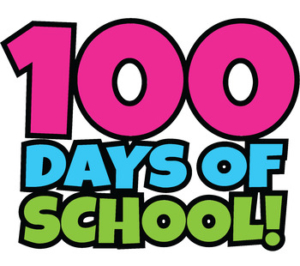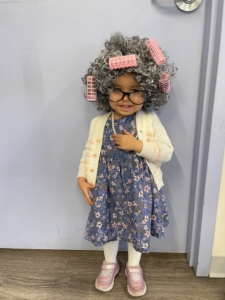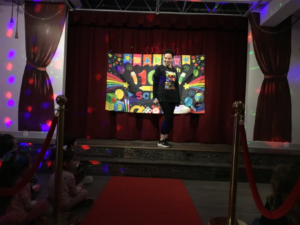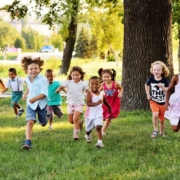Heightened Security Practices
/0 Comments/in blogs, Preschool Ponderings /by marketingadmin

The number one concern in any group setting is security. In this modern day and age this concern extends to school settings, as well. We, at Newtown Discovery Preschool, are very cognizant of security and take pride in our extensive measures.
Security starts before entering the building. Our building has 36 cameras strategically placed for 24 hour surveillance. The camera feeds are stored for 30 days allowing for review of footage. The areas include not only the classrooms, but the outdoor playspace and building perimeters.
Some programs do offer camera access for parents. Do be wary of these apps as a breach of security may easily occur. There are several reasons for this:
- The application is managed by a third party
- Unless administrators turn off access for those not attending on a given day (ie. due to illness), parents are able to view children other than their own
- As the feed is live, there is no way to go back and review the previous events of the day
- Parents often keep the app on their desktop computer allowing others to view children in the classroom
- Parents can record (although they are requested not to do so) their own children as well as others
Having an application that permits parents to receive photos/videos directly from the classroom teacher gives you connectivity and protection. Reports are stored by the application day by day to allow parents to review past entries as easily as current entries. The application permits direct communication between parents and teachers throughout the course of the day. Parents may tag photos, videos, or updates or email the classroom without going through the administrative team.
Our doors are pre-programmed to allow parental access with individualized codes during limited morning and evening hours. This is done to limit the flow of adult visitors throughout the course of the day. Parents wait in the vestibule for children outside of these hours. The doors are equipped with a sensor that will only allow exit by those of a certain height. No child in the building is tall enough to trigger the sensor without the assistance of an adult.
Our doorbells for both the front and back doors have both a camera and intercom allowing us to check identification before opening doors. No unauthorized visitors (i.e. DoorDash, UPS, etc.) are permitted inside the school. An email with scheduled tours is sent to everyone in the building notifying all of visitors and the timing of such visitors.
All classrooms and office spaces are equipped with panic buttons. The classroom doors are all locked from the outside, but freely open from the inside. Depression of the panic button will close any doors left ajar and prevent exit or entry into the building until the alarm company and police ensure us of safety.
Each floor of the building has open ceilings with a state-of-the-art sprinkler system. The sprinkler system slows the spread of fire and allows for an easy and speedy evacuation.
Our two main locations are in Newtown and Warrington and we support the Doylestown area.
How to Remain Calm When Your Toddler Hits
/0 Comments/in blogs, Preschool Ponderings /by marketingadmin
Hitting is a common behavior among toddlers, and it can be challenging for parents to know how to respond. It is important to understand that hitting is a normal part of child development; children at this age are still learning how to express their emotions and communicate effectively. However, it is also important to address this behavior in order to teach your child appropriate ways to express themselves.
- Remain calm: When a toddler hits, it is important to remain calm and not to react with anger or frustration. This will help to de-escalate the situation and to prevent further hitting.
- Acknowledge their feelings: Toddlers hit, because they are upset or frustrated; they do not have the language to express themselves. Acknowledge their feelings and help them to understand and express them in appropriate ways.
- Model appropriate behavior: Show your toddler how to express their emotions in appropriate ways such as using words instead of hitting or through art and play.
- Redirect their behavior: If your toddler is hitting because they want attention or because they are bored, redirect their behavior by providing positive alternatives such as playing with a toy or reading a book.
- Consistency and consequences: Consistency is key when dealing with toddler behavior. It is important to be consistent with your reactions to hitting and to provide clear and appropriate consequences for this behavior.
- Positive reinforcement: Positive reinforcement is a powerful tool for encouraging appropriate behavior. Reward your toddler for using appropriate ways of expressing themselves such as using words instead of hitting.
- Seek Professional Help: If your child’s hitting behavior is frequent or severe, it’s a good idea to seek professional help. A therapist or pediatrician can help you to understand your child’s behavior and to develop strategies to address it.
In conclusion, hitting is a common behavior among toddlers, and it can be challenging for parents to know how to respond. It is important to understand that hitting is a normal part of child development, and that children at this age are still learning how to express their emotions and communicate effectively. However, it is also important to address this behavior in order to teach your child appropriate ways to express themselves. It’s important to remain calm, acknowledge their feelings, model appropriate behavior, redirect their behavior, maintain consistency, ensure consequences, offer positive reinforcement and seek professional help if needed.
Our two main locations are in Newtown and Warrington and we support the Doylestown area.
Eight Ways to Learn About the 5 Senses at Home
/0 Comments/in blogs, Preschool Activities, Preschool Ponderings /by marketingadmin5 Ways Yoga Benefits Children in Daycare
/0 Comments/in blogs, Preschool Education, Preschool Ponderings /by marketingadmin7 Ways to Celebrate Black History Month with Your Preschooler
/0 Comments/in blogs, Preschool Ponderings /by marketingadmin

Black History Month is a time to celebrate the contributions and achievements of African Americans throughout history. It’s an opportunity to educate young children about the importance of diversity, inclusion, and the role of African Americans in shaping our country’s history.
- Read books: Reading books about African American history and notable figures is a great way to introduce children to the topic. You can find books that are specifically written for young children such as Let the Children March by Monica Clark-Robinson,
I am Rosa Parks by Brad Meltzer, and Rosa Parks: My Story by Rosa Parks.
- Art projects: Art projects are a fun way to explore and learn about African American culture. Children can create their own artwork inspired by the works of famous African American artists such as Jacob Lawrence, Romare Bearden, and Lois Mailou Jones.
- Music and dance: Music and dance are an important part of African American culture. Introduce children to different styles of African American music such as jazz, blues, and gospel and have them move to the beat.
- Cooking: Cooking is a great way to introduce children to different foods and flavors that are part of African American cuisine. You can make traditional dishes such as collard greens, sweet potato pie, and fried chicken and have children help with the preparation.
- Field trips: Field trips to local museums or historical sites can be a great way to learn about African American history. Many museums have exhibits dedicated to African American history, art, and culture.
- Role-playing: Children can role-play famous African American figures such as Martin Luther King Jr., Harriet Tubman, or Malcolm X. This can help them to understand the historical context and the struggles of these figures.
- Community service: Community service is a great way to teach children the importance of giving back and making a difference. You can organize a community service project such as volunteering at a local soup kitchen, or doing a community clean-up.
Our two main locations are in Newtown and Warrington and we support the Doylestown area.
Educational Benefits of Celebrating the 100th Day of School
/0 Comments/in blogs, Preschool Ponderings /by marketingadmin
The 100th day of school is a significant milestone in the school year, and it is often celebrated with special activities and events. It is a great opportunity for students to reflect on their progress and to celebrate their accomplishments. There are also a variety of educational benefits that come with celebrating the 100th day of school.
- Reflect on progress: The 100th day of school is a great opportunity for students to reflect on their progress and to celebrate their accomplishments. It allows students to see how far they have come since the start of the school year and to appreciate their hard work and effort.
- Builds math skills: Many activities and events that are planned for the 100th day of school are math-based like counting to 100, making a collection of 100 items, etc. This helps students to reinforce their math skills-especially counting and number recognition.
- Celebrate teamwork and community: The 100th day of school is a great opportunity for students to come together and celebrate their progress as a community. It is a time for students to recognize their classmates’ achievements and to appreciate the hard work and effort of their teachers.
- Encourage creativity and imagination: Many activities and events that are planned for the 100th day of school encourage creativity and imagination such as dressing up like they will be 100 years old or making art projects using 100 items. This helps students to tap into their creativity and to express themselves in unique ways.
- Motivation and engagement: Celebrating the 100th day of school can be a great motivator for students to stay engaged and enthusiastic about their learning. It also helps to create a positive and fun-loving school environment.
- A sense of accomplishment: The 100th day of school is a significant milestone and it gives students a sense of accomplishment. It is a reminder that with hard work and perseverance, they can achieve their goals and make progress over time.
In conclusion, celebrating the 100th day of school is a fun and engaging way to recognize the progress that students have made over the course of the school year. It encourages teamwork, creativity and imagination, and helps to reinforce math skills. It provides a sense of accomplishment, motivation and engagement, and creates a positive and fun-loving school environment. It’s a way of celebrating the journey!
Our two main locations are in Newtown and Warrington and we support the Doylestown area.




Seeking and Securing Services
/0 Comments/in blogs, Preschool Ponderings /by marketingadmin 
Your child starts at an early childhood center and you receive the first call about a behavior. You carefully listen to what the teacher says and attribute it to a “bad” day. You then receive call number 2, 3, 4, or higher. Now, what do you do?! Where do you turn and who can help?
Anyone residing in Bucks County can reach out to the Local Interagency Coordinating Council (BCICC). This agency assists parents, early interventions specialists, and community partners in gathering information and making informed decisions. The council includes parents and representatives from the Bucks County Intermediate Unit (IU), the Bucks County Department of Health, the Bucks County Department of Mental Health and Developmental Programs, and educators.
Service agencies distinguish between Early Intervention (EI) from birth to 3 years of age and Preschool Early Intervention from 3-5 years of age. Please note that services may only be secured by a parent or guardian and not by teachers or administrators.
In Lower Bucks County for children ages birth to 3 years of age, reaching out to Merakey is the starting point (www.merakey.org). Merakey case managers will work with families to answer questions and to obtain the evaluations needed to start the process. Pennsylvania requires services to begin within 14 days from approval of the individualized family service plan (IFSP)Statistics reveal that 99.97% of eligible infants and toddlers receive services at home or in community settings.
For children ages 3 years to 5 years of age, the process begins with completing a request form through Bucks County Intermediate Unit (PEI Screening Request Form – Formstack). The Bucks County IU is the non-competitive sole source provider of services to students with disabilities contracted through school districts in Bucks County. The Individualized Education Program (IEP) must be completed within 30 calendar days after the evaluation teams issue the report and put into action within ten school days after completion. Services may be delivered in the preschool setting or at home.
Many parents fear the stigma associated with evaluation and services. Please note that there must be a qualifying diagnosis to start the process. The plans must be evaluated yearly to determine the need to continue or terminate delivery of services.
The earlier the intervention begins, the better the outcome. Studies cite endless positive benefits without any detrimental effects. Any quality child care program will be more than happy to assist you in navigating through the process. An inclusive program values student differences and supports each child’s learning needs to the greatest extent possible.
Our two main locations are in Newtown and Warrington and we support the Doylestown area.
Community Outreach & Growth
/0 Comments/in blogs, Preschool Education, Preschool Ponderings /by marketingadminTechnology in the Early Childhood Years
/0 Comments/in blogs, Preschool Ponderings /by marketingadmin

It is very common for parents to ask about policies in early childhood programs relating to technology and technology usage. When speaking of technology we are encompassing a broad area including television, video games, smartboards, iPads, and social media. Although some research suggests that some preschoolers are familiarized with digital devices before becoming familiarized with print (Hopkins, Brookes, and Green, 2013), there is no body of scientific evidence proving detrimental long-term effects. In fact, major changes in the brain resulting from screen time is highly unlikely. (Mills, 2014) Early childhood programs can effectively integrate technology to reinforce fundamental skills, encourage physical movement, and make real world connections.
Unsure about how much screen time is too much for young children? Check out these guidelines established by the World Health Organization:
0 minutes/day for children younger than 2 years of age
Infants (under 1 year of age)
- should experience interactive floor-based play
- 30 minutes of prone time (tummy time) for those not yet mobile
- 14-17 hours of sleep (0-3 months) or 12-16 hours of sleep (4-11 months)
Children 1-2 years of age
- 180 minutes of physical activity
- 11-14 hours of sleep
- No greater than 60 minutes of sedentary time (including stroller rides or sitting)
- No screen time for one year olds
- Less than an hour of screen time for two year olds
60 minutes or less for children ages 3-4 years of age
Children ages 3-4 years of age
- 180 minutes of physical activity
- 10-13 hours of sleep
- Less than an hour of sedentary time
- No greater than one hour of screen time
In conclusion, follow the ancient adage: “Everything in moderation, including moderation.” Providing stimulating and engaging opportunities throughout the course of day promotes these healthy habits. By doing so, children will not request nor miss screen time. The easiest way to achieve this… lead by example. Turn off your cell phone and computer and read a book, play a game, or exercise. The gain to all is well worth it!
Our two main locations are in Newtown and Warrington and we support the Doylestown area.
Locations
27 Blacksmith Road
Newtown, PA 18940
847 Easton Road
Warrington, PA 18976
Contact Us
(267) 753-6040
enrollment@thediscoverypreschools.com








